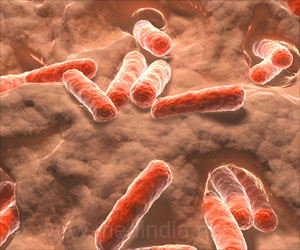Networks of interactive genes can be helpful in determining the likelihood that a form of leukaemia is fast-moving or slow-growing.
Networks of interactive genes can be helpful in determining the likelihood that a form of leukaemia is fast-moving or slow-growing.
Scientists at the University of California, San Diego (UC San Diego) and the Moores UCSD Cancer Center say that their findings suggest that it is better to rely upon groups of interactive genes rather than test for individual marker genes or proteins to predict the aggressiveness of chronic lymphocytic leukemia (CLL).The researchers underscore the fact that one of the problems in deciding on the right therapy for CLL is that it is difficult to know which type a patient has. While one form progresses slowly and shows few symptoms for years, the other form is more aggressive and dangerous.
Even thought there are tests that are commonly used for predicting which form a patient may have, their usefulness is limited.
Han-Yu Chuang, a Ph.D. candidate in bioinformatics and systems biology program in the department of bioengineering in the UC San Diego Jacobs School of Engineering, senior author Thomas Kipps, M.D., Ph.D., professor of medicine and deputy director for research at the Moores UCSD Cancer Center, and their colleagues analyzed the activity and patterns of gene expression in cancer cells from 126 patients with aggressive or slow-growing CLL.
The group used complex algorithms to match the gene activity profiles with a huge database of 50,000 known protein complexes and signaling pathways among nearly 10,000 genes/proteins, searching for "subnetworks" of aggregate gene expression patterns that separated groups of patients.
The researchers observed that there were 30 gene subnetworks that were better in predicting whether a disease was aggressive or slow-growing than current techniques based on gene expression alone.
Advertisement
The researcher added: "By introducing the relevant pathway information, we can do a better job in prognosis."
Advertisement
"When you are analysing just the gene expression, you are analysing it in isolation. Genes act in concert and are functionally linked together. We have suggested that it makes more sense to analyze the genes' expression in a more mechanistic view, based on information about genes acting together in a particular pathway. We are looking for new markers - no longer individual genes - but a set of co-functional, interconnected genes. We would like to be able to model treatment-free survival," Chuang said.
The team said that clinical trials would be required to validate whether specific subnetworks of genes could actually predict disease CLL progression in patients.
Chuang believes that the subnetworks can be used to provide "small scale biological models of disease progression," which may enable researchers to better understand the process.
She said that the ultimate objective of the team was to design a diagnostic chip to test blood samples for such genetic subnetworks, so as to observe the likely course of disease.
She said that the involved biological pathways could be drug targets as well.
Source-ANI
SK







